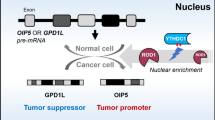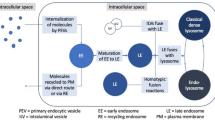Abstract
Translational control is a basic mechanism for gene regulation in cells and important for tissue growth and development in mammals. Deregulation of the mechanism thus causes diseases such as cancer. Considering the importance of the ribosome as a factory of polypeptide synthesis, some new factors have been expected to be associated with the ribosome and involved in translational control. Our proteomic survey for these factors identified a zinc finger protein, Lyar, in cytoplasmic ribosomes of the rodent testis. Subcellular fractionation of the testis provided data supporting association of Lyar with ribosomes. Lyar was then suggested to be included in the 60S large subunit, but not in polysomes, by ultracentrifugation of testicular ribosomes. While analysis of tissue distribution of Lyar has indicated its testis-predominant expression, Lyar mRNA was expressed in the cancer cells originated from tissues other than testis, and Lyar promoted proliferation of NIH-3T3 cells. Furthermore, translation was increased by Lyar in vitro, pointing out the first experimental link between this protein and translation. Taken together, Lyar seems to be a new player in translational control and a potential target for cancer therapy.






Similar content being viewed by others
Abbreviations
- GAPDH:
-
Glyceraldehyde-3-phosphate dehydrogenase
- MBP:
-
Maltose-binding protein
- MS:
-
Mass spectrometry
- MS/MS:
-
Tandem mass spectrometry
- NCBI:
-
National center for biotechnology information
- PAGE:
-
Polyacrylamide gel electrophoresis
- PCR:
-
Polymerase chain reaction
- PMF:
-
Peptide mass fingerprint
- RT:
-
Reverse transcription
- SDS:
-
Sodium dodecyl sulfate
- TOF:
-
Time-of-flight
References
McConkey EH, Bielka H, Gordon J, Lastick SM, Lin A, Ogata K, Reboud JP, Traugh JA, Traut RR, Warner JR, Welfle H, Wool IG (1979) Proposed uniform nomenclature for mammalian ribosomal proteins. Mol Gen Genet 169:1–6
Wool IG, Chan YL, Gluck A (1995) Structure and evolution of mammalian ribosomal proteins. Biochem Cell Biol 73:933–947
Sugihara Y, Honda H, Iida T, Morinaga T, Hino S, Okajima T, Matsuda T, Nadano D (2010) Proteomic analysis of rodent ribosomes revealed heterogeneity including ribosomal proteins L10-like, L22-like 1, and L39-like. J Proteome Res 9:1351–1366
Sugihara Y, Sadohara E, Yonezawa K, Kugo M, Oshima K, Matsuda T, Nadano D (2013) Identification and expression of an autosomal paralogue of ribosomal protein S4, X-linked, in mice: potential involvement of testis-specific ribosomal proteins in translation and spermatogenesis. Gene 521:91–99
Xue S, Barna M (2012) Specialized ribosomes: a new frontier in gene regulation and organismal biology. Nat Rev Mol Cell Biol 13:355–369
Filipovska A, Rackham O (2013) Specialization from synthesis: how ribosome diversity can customize protein function. FEBS Lett 587:1189–1197
Dresios J, Panopoulos P, Synetos D (2006) Eukaryotic ribosomal proteins lacking a eubacterial counterpart: important players in ribosomal function. Mol Microbiol 59:1651–1663
Stumpf CR, Ruggero D (2011) The cancerous translation apparatus. Curr Opin Genet Dev 21:474–483
Teng T, Thomas G, Mercer CA (2013) Growth control and ribosomopathies. Curr Opin Genet Dev 23:63–71
Sonenberg N, Hinnebusch AG (2007) New modes of translational control in development, behavior, and disease. Mol Cell 28:721–729
Kleene KC (2003) Patterns, mechanisms, and functions of translation regulation in mammalian spermatogenic cells. Cytogenet Genome Res 103:217–224
Jackson RJ, Hellen CUT, Pestova TV (2010) The mechanism of eukaryotic translation initiation and principles of its regulation. Nat Rev Mol Cell Biol 11:113–127
Su L, Hershberger RJ, Weissman IL (1993) LYAR, a novel nucleolar protein with zinc finger DNA-binding motifs, is involved in cell growth regulation. Genes Dev 7:735–748
Li H, Wang B, Yang A, Lu R, Wang W, Zhou Y, Shi G, Kwon SW, Zhao Y, Jin Y (2009) Ly-1 antibody reactive clone is an important nucleolar protein for control of self-renewal and differentiation in embryonic stem cells. Stem Cells 27:1244–1254
Wang G, Fulkerson CM, Malek R, Ghassemifar S, Snyder PW, Mendrysa SM (2012) Mutations in Lyar and p53 are synergistically lethal in female mice. Birth Defects Res A Clin Mol Teratol 94:729–737
Lee B, Jin S, Choi H, Kwon JT, Kim J, Jeong J, Kwon YI, Cho C (2013) Expression and function of the testis-predominant protein LYAR in mice. Mol Cells 35:54–60
Miyazawa N, Yoshikawa H, Magae S, Ishikawa H, Izumikawa K, Terukina G, Suzuki A, Nakamura-Fujiyama S, Miura Y, Hayano T, Komatsu W, Isobe T, Takahashi N (2014) Human cell growth regulator Ly-1 antibody reactive homologue accelerates processing of preribosomal RNA. Genes Cells 19:273–286
Miyoshi M, Okajima T, Matsuda T, Fukuda MN, Nadano D (2007) Bystin in human cancer cells: intracellular localization and function in ribosome biogenesis. Biochem J 404:373–381
Taga Y, Miyoshi M, Okajima T, Matsuda T, Nadano D (2010) Identification of heterogeneous nuclear ribonucleoprotein A/B as a cytoplasmic mRNA-binding protein in early involution of the mouse mammary gland. Cell Biochem Funct 28:321–328
Akiyama Y, Oshima K, Shin K, Wakabayashi H, Abe F, Nadano D, Matsuda T (2013) Intracellular retention and subsequent release of bovine milk lactoferrin taken up by human enterocyte-like cell lines, Caco-2, C2BBe1 and HT-29. Biosci Biotech Biochem 77:1023–1029
Nakamura M, Tomita A, Nakatani H, Matsuda T, Nadano D (2006) Antioxidant and antibacterial genes are upregulated in early involution of the mouse mammary gland: sharp increase of ceruloplasmin and lactoferrin in accumulating breast milk. DNA Cell Biol 25:491–500
Hosono H, Yamaguchi N, Oshima K, Matsuda T, Nadano D (2012) The murine Gcap14 gene encodes a novel microtubule binding and bundling protein. FEBS Lett 586:1426–1430
Warner JR (1990) The nucleolus and ribosome formation. Curr Opin Cell Biol 2:521–527
Horigome C, Mizuta K (2012) Ribosome biogenesis factors working with a nuclear envelope SUN domain protein: new players in the solar system. Nucleus 3:22–28
Silvera D, Formenti SC, Schneider RJ (2010) Translational control in cancer. Nat Rev Cancer 10:254–266
Monesi V (1967) Ribonucleic acid and protein synthesis during differentiation of male germ cells in the mouse. Arch Anat Microsc Morphol Exp 56:61–74
Beckler GS, Thompson D, Van Oosbree T (1995) In vitro translation using rabbit reticulocyte lysate. Methods Mol Biol 37:215–232
Morley SJ, Hershey JWB (1990) A fractionated reticulocyte lysate retains high efficiency for protein synthesis. Biochimie 72:259–264
Kirkin AF, Dzhandzhugazyan KN, Zeuthen J (2002) Cancer/testis antigens: structural and immunological properties. Cancer Invest 20:222–236
Simpson AJG, Caballero OL, Jungbluth A, Chen YT, Old LJ (2005) Cancer/testis antigens, gametogenesis and cancer. Nat Rev Cancer 5:615–625
Nadano D, Notsu T, Matsuda T, Sato T (2002) A human gene encoding a protein homologous to ribosomal protein L39 is normally expressed in the testis and derepressed in multiple cancer cells. Biochim Biophys Acta 1577:430–436
Uechi T, Maeda N, Tanaka T, Kenmochi N (2002) Functional second genes generated by retrotransposition of the X-linked ribosomal protein genes. Nucleic Acids Res 30:5369–5375
Abdelmohsen K, Gorospe M (2012) RNA-binding protein nucleolin in disease. RNA Biol 9:799–808
Johnson AW, Ellis SR (2011) Of blood, bones, and ribosomes: is Shwachman-Diamond syndrome a ribosomopathy? Genes Dev 25:898–900
Kim B, Park K, Rhee K (2013) Heat stress response of male germ cells. Cell Mol Life Sci 70:2623–2636
Acknowledgments
This study was supported in part by a grant-in-aid for Scientific Research (25450514) from the Ministry of Education, Culture, Sports, Science and Technology of Japan.
Author information
Authors and Affiliations
Corresponding author
Additional information
Kahori Yonezawa, Yoshihiko Sugihara have equally contributed to this work.
Electronic supplementary material
Below is the link to the electronic supplementary material.
Rights and permissions
About this article
Cite this article
Yonezawa, K., Sugihara, Y., Oshima, K. et al. Lyar, a cell growth-regulating zinc finger protein, was identified to be associated with cytoplasmic ribosomes in male germ and cancer cells. Mol Cell Biochem 395, 221–229 (2014). https://doi.org/10.1007/s11010-014-2128-x
Received:
Accepted:
Published:
Issue Date:
DOI: https://doi.org/10.1007/s11010-014-2128-x




